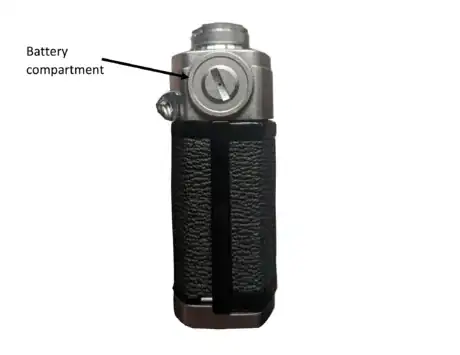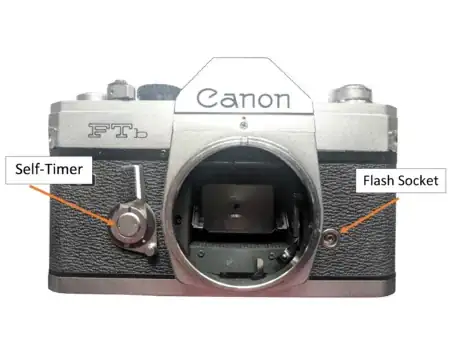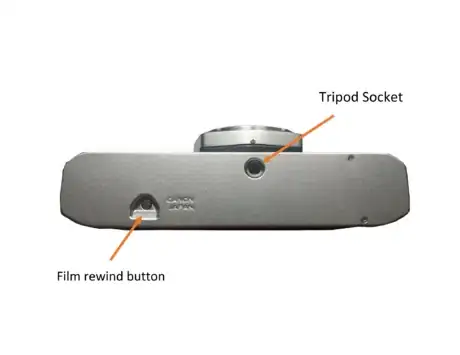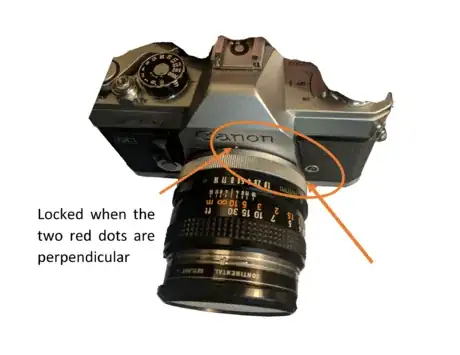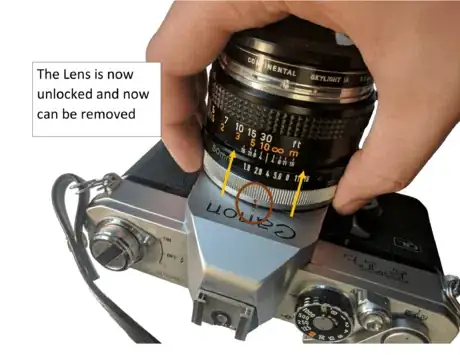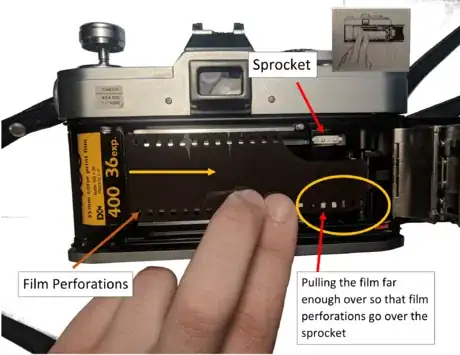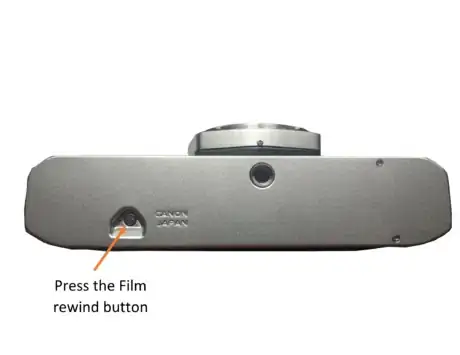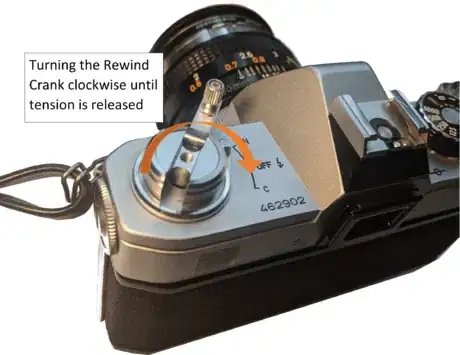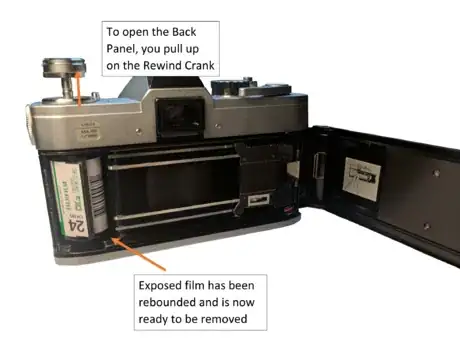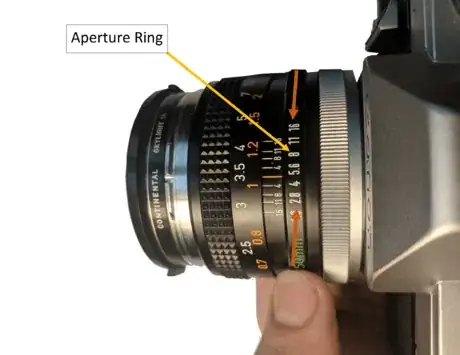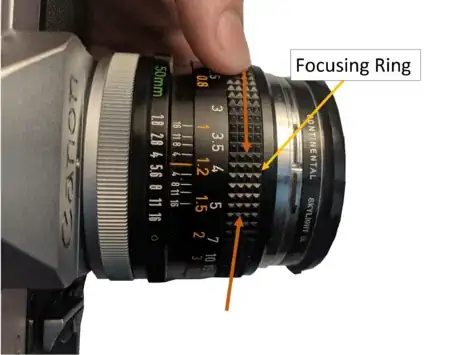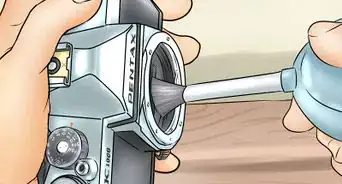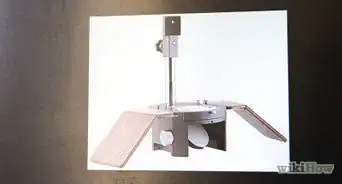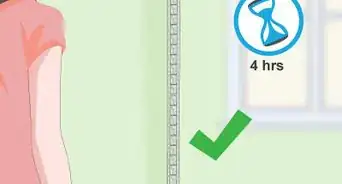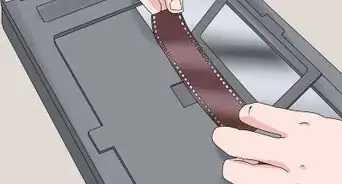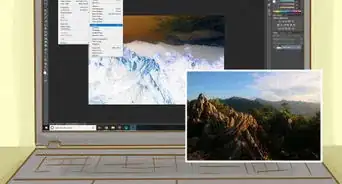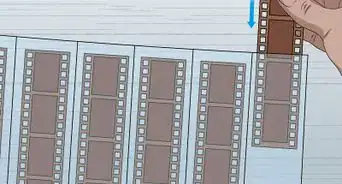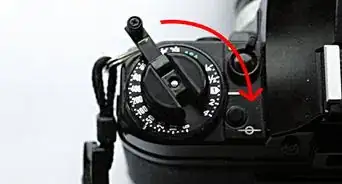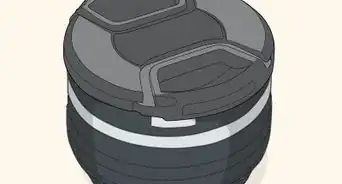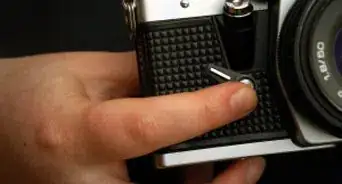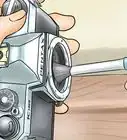This article was co-authored by Crystal Bear. Crystal Bear is a Professional Photographer and the Owner of Summer Bear Photography. Crystal specializes in weddings and portraits for women. She holds a BS in Interior Design and Consumer Science from San Francisco State University. Coming from a design background, Crystal brings a sense of style and artistry to her work that brings out her client’s inner confidence, showcases their beauty both inside and out, and puts them at ease. She also specializes in using the correct lighting and branding for women entrepreneurs.
This article has been viewed 33,010 times.
In the modern world of digital cameras using a film camera can seem difficult and overwhelming, but the quality and look that they produce will impress others. Film photography is also a great hobby that teaches patience and perspective with limited shots and manual adjustments "you slow down and think more about how you should shoot." This guide will help you get to know your FTb camera better especially for first-time film users.
Steps
Familiarizing Yourself With the Camera
-
1Understand the top view.
- Film Rewind crank: this crank is used to rewind the film manually, this is also how you open the back panel to load and unload film.
- Light Meter Switch: you need a battery for this it is not necessary to take quality photos but helps with finding the right aperture and shutter speed settings great for beginners.
- Focusing Ring: This is used so that you can make the object that you are photographing clear.
- Aperture Ring: This is used to adjust the amount of light that exposes to the film, this is important to adjust according to your light environment.
- ASA Film Speed: This is used to adjust the ASA which is the referred to as film speed, The film speed you choose depends on what film you have to use the manufacturer will note the film speed: 400 is the most common ideal for indoor and outdoor shots.
- Shutter Lock: This is used to lock the shutter to prevent unintentional photos when the engraved line on the dial is pointed at “L” then the shutter lock is activated is it is pointed at “A” then the camera is ready to take photos.
- Shutter Release Button: This will release the shutter and expose the film which “takes the photo”.
- Shutter Speed Dial: This is how you choose how fast your shutter opens then closes.
- Film Advance Lever: This moves the exposed film out of the way, moving a new piece of unexposed film ready to be used.
- Framer Counter: This will let you know how many frames you have used
-
2Understand the side view.
- Battery Compartment: This is where the battery is held, this use to hold a mercury battery (1.3v) which is unsafe and most likely banned in your country. The replacement battery is a 1.5v alkaline battery 625a. The only issue is that the meter doesn’t read as accurate as it used to because of the change in voltage from the replacement battery.
Advertisement -
3Understand the front view.
- Self-Timer: this activates with the shutter release button, after you twist the lever. There will be approximately 10 seconds of lag.
- Flash Socket: this is for a flash accessory, this is used so that the flash is timed correctly with the shutter.
-
4Understand the back view.
- View Finder: this is used to see what your lens is viewing so that you can Focus and take your photo how you see fit.
- Back Panel: this is where film is stored.
-
5Understand the bottom view.
- Film Rewind Button: This is a button that you press when you use up all your frames on your roll of film.
- Tripod Socket: This socket is used for tripods which are great for slow shutter speeds and precision shots.
Removing the Lens
-
1Know that when the lens is locked this is when the red dot on the camera and the red dot on the lens are perpendicular.
-
2Unlock the lens.
- To unlock the lens, turn the bayonet ring to the left until the red dot on the lens lines up with the bayonet dot.
-
3Remove the lens. It is now unlocked and can be removed.
- To put a lens back on, line the two red dots together and turn right on the bayonet ring until the red dots are perpendicular.
- The Canon FTb is from 1971 and the lens mount it uses is an older model than the current modern canon lens cameras. The type of lens mount is called the Canon FD which was introduced in 1971 and used on various canon models until 1987.
Loading Film
-
1Open the back panel. Pull upwards on the rewind crank to open the back panel so that you can load a new roll of film.
-
2Load a new roll of film.
- Place the film in the cartridge compartment.
- Follow the diagram that is on the inside of the panel. With two fingers, keeping the film down so that the film doesn’t rise, pull the film slowly to the right lining up the film perforations with the film advance sprocket.
- Close the back panel.
-
3Get ready to shoot.
- When you pressed the film rewind button earlier, the frame counter should have went back to S. Pull the film advance lever and press the shutter release button 3 times. This moves the blank frames and unexposed film so that the camera is ready to take photos.
Unloading Film
-
1Assess whether you need film or not.
- When you are not able to pull the film advance lever and you can't press the shutter release button, that means you need to remove the film and replace it with a new roll.
-
2Press the film rewind button.
- This will reset the frame count and will allow you to wind the film.
-
3Raise the film rewind crank. and turn it clockwise (following the arrow on the crank) several times until the tension is released.
-
4Open the back panel. Flip the rewind crank back into its normal position. Pull upwards on the rewind crank to open the back panel. This will allow you to remove used film.
Taking Photos
-
1Understand aperture and shutter speed.
- Do some research so you understand aperture and shutter speed; these are important concepts to understand while using any manual film camera.
-
2Adjust the aperture.
- Turning the aperture ring counter-clockwise will decrease the amount of light that will be exposed to the film suitable for bright lighting.
- Turning the ring clockwise will increase the amount of light that will be exposed suitable for low lighting.
- You can also follow the ring in the viewfinder; up is for brighter environments and down is for dimmer environments.
-
3Focus. Move the focusing ring to the right or left until the subject that you are photographing is clear.
-
4Use the light meter. After turning on the Light Meter look through the viewfinder to the right side. The circle represents aperture, and the needle represents shutter speed. Move both the shutter speed and aperture until they line up to give you a better idea of what to set your aperture and shutter speed to.
- Using the light meter isn’t necessary for taking good quality photos with the FTb, but it can help beginners with finding a general aperture and shutter speed. You shouldn’t rely on this light meter though; although it can be a useful tool in guiding you, it is deceptive and not as accurate as it used to be. This is due to the change in voltage with the alkaline replacement battery because the original battery was a mercury battery.
-
5Take your photos. Once you find the right aperture and shutter speed setting and you have your camera focused, make sure your shutter lock is set to “A” and gently press the shutter release button.
- You will hear a click and that will be the shutter opening and closing, exposing the film to what you have your camera focused on.
- To shoot another photo you must pull the film advance lever to the right and then you are ready to take another photo.
Warnings
- Shooting with a low shutter speed (below 60 especially) will result in a blurred image, unless you are using a tripod or the camera is in a fixed position⧼thumbs_response⧽
References
- Mercury is hazardous to humans - be cautious if an original battery is found in the camera or is found with it. You should dispose of these properly.

